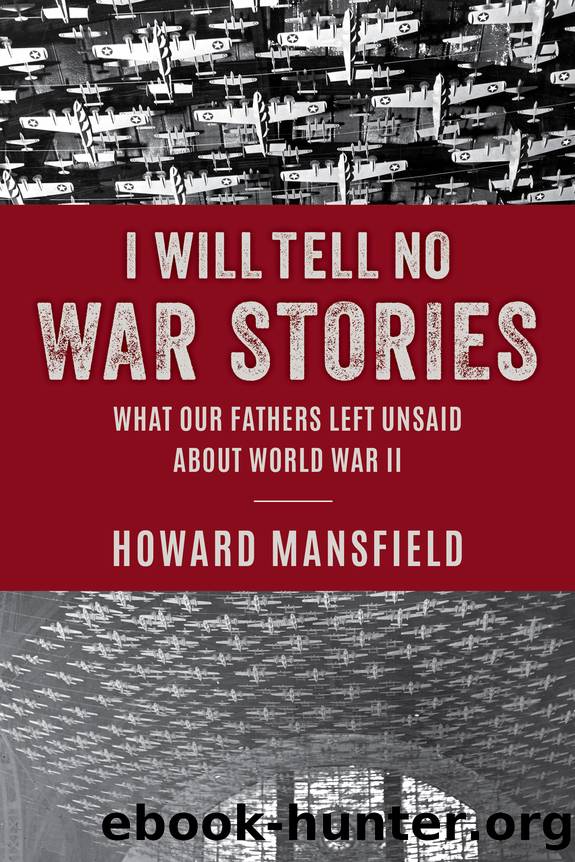I Will Tell No War Stories by Howard Mansfield

Author:Howard Mansfield
Language: eng
Format: epub
Publisher: Globe Pequot
Published: 2024-01-13T00:00:00+00:00
METZ
On August 18, my father flew in a different B-24, My Babs, to bomb an airfield in Metz, France. Initially, Winston Churchill had opposed bombing occupied France. The âslaughterâ of French civilians might âleave a legacy of hateâ and âsmear the good name of the Royal Air Force across the world,â he told Franklin Roosevelt. âIt must be remembered, on the one hand, that this slaughter is among a friendly people who have committed no crimes against us, and not among the German foe, with their record of cruelty and ruthlessness.â In Germany, Churchill was committed to a policy of âdehousing,â of bombing civilians out of their homes, a policy that led to the firestorms in Hamburg, Dresden, and dozens of other cities killing a half million or more and leaving five million without homes. In France, Churchill sought assurances that no more than one hundred French would be killed in each attack. He finally agreed that transportation should be targeted in France.
General Carl âTooeyâ Spaatz, the commander of the Strategic Air Forces in Europe, was also wary of bombing railroads, bridges, and airfields in France. He was worried that the Germans would exaggerate the civilian causalities for their propaganda. He set restrictions, banning bombing with radar through cloud cover. âBlind bombing,â as the airmen called it, killed thousands of civilians. Only two percent of the bombs hit within one thousand feet of the aiming point.
The raid on the Metz airfield confirms Churchillâs objections: some of the bombs fell ten miles short. âTakeoff delayed by runaway turbo,â my father reported. âBombs dropped 10 miles short of target due to error of deputy lead. 3 other planes dropped.â
The bombs from the deputy lead, and the three other B-24s, fell ten miles short, but where? In three hundred pages of mission plans, reports, and intelligence assessments, I find no mention of this. The results of bombing the Metz airfield by the 453rd are rated as âgood,â with one squadron reporting 92 percent of their bombs landing within one thousand feet of the targetâs bullâs-eye, and another claiming 100 percent. The airfield was a âmass of smoke & flames,â my father wrote.
To pick out one errant bomber makes it sound as if this was an isolated event on a fine summerâs day, with twelve tons of high explosives from four B-24s breaking the peace and falling on a village or a farmâa âFlub-Dub Blitzâ or âsummer plowing,â as they called such mistakes. But that day over Metz, there were seventy-eight B-24s dropping 234 tons of bombs on the airfield. And this was just a part of the 772 bombers and hundreds of fighters dispatched to fifteen assigned targets plus a few âtargets of opportunityâ they picked up along the way.
âHundreds of U.S. Eighth Air Force P-47 Thunderbolts, P-38 Lightnings, and P-51 Mustangs swarmed down to bomb and strafe rail lines, highways, and airfields in France Friday, hampering escape or reinforcement of the hard-pressed Germany armies,â said a press release from the headquarters of the United States Strategic Air Forces in Europe.
Download
This site does not store any files on its server. We only index and link to content provided by other sites. Please contact the content providers to delete copyright contents if any and email us, we'll remove relevant links or contents immediately.
| Americas | African Americans |
| Civil War | Colonial Period |
| Immigrants | Revolution & Founding |
| State & Local |
In Cold Blood by Truman Capote(2688)
Steve Jobs by Walter Isaacson(2438)
All the President's Men by Carl Bernstein & Bob Woodward(1962)
Lonely Planet New York City by Lonely Planet(1847)
The Murder of Marilyn Monroe by Jay Margolis(1744)
The Room Where It Happened by John Bolton;(1722)
The Poisoner's Handbook by Deborah Blum(1664)
And the Band Played On by Randy Shilts(1619)
Lincoln by David Herbert Donald(1613)
The Innovators by Walter Isaacson(1593)
The Innovators: How a Group of Hackers, Geniuses, and Geeks Created the Digital Revolution by Walter Isaacson(1507)
A Colony in a Nation by Chris Hayes(1503)
Under the Banner of Heaven: A Story of Violent Faith by Jon Krakauer(1417)
The Unsettlers by Mark Sundeen(1342)
Birdmen by Lawrence Goldstone(1340)
Amelia Earhart by Doris L. Rich(1339)
Decision Points by George W. Bush(1254)
Dirt by Bill Buford(1236)
Zeitoun by Dave Eggers(1225)
